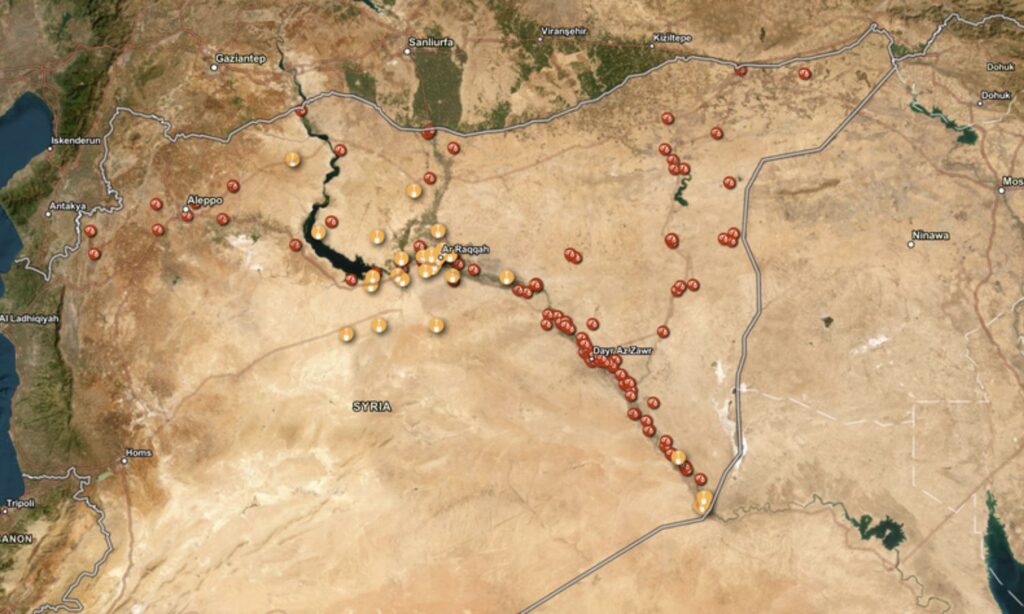On Thursday, February 29, the Syria Justice and Accountability Center (SJAC) published a new interactive map of northern Syria featuring 246 prisons of the Islamic State organization and 63 gravesites, including 66 prisons and 35 gravesites revealed for the first time.
These locations were uncovered through the intense efforts of the SJAC team in addition to the Syrian Missing Persons and Forensic Team (SMFT) in Raqqa, which relied on interviews with survivors from Islamic State prisons, former members, and other witnesses, as well as internal sources (administrative documents of the Islamic State).
The Islamic State hid thousands of individuals in Syria in a network of prisons and mass graves spanning from Idlib to the Iraqi border.
Even after the formal defeat of the organization, many families are still unable to determine the whereabouts of their loved ones or uncover their fate, according to the SJACs report.
The Missing Persons program affiliated with the Syria Justice and Accountability Center works on documenting the missing persons in Syria and identifying the network of mass graves and former prisons belonging to the Islamic State organization, in hopes of using this information to uncover the fate of the missing.
The map of the SJAC includes not only the official prisons of the Islamic State organization but also training camps, temporary detention sites, and private houses where Yazidi women were enslaved.
It also includes the graves where the organization buried its victims, the bodies of its members, and the victims of the International Coalition bombing. By mapping these sites together, investigators can visualize potential patterns and relationships.
The latest investigation conducted by the SJAC regarding Islamic State prison at al-Mansoura Dam, on February 22, showed that geographical proximity is a key factor in linking prisons to the gravesites where former detainees were buried.
The report examines the organization’s internal documents and forensic data extracted from the gravesite, exclusively available to the Syria Justice and Accountability Center, in addition to the oral testimony provided in interviews conducted by the center with more than 24 families of a missing individual alleged to have been held at al-Mansoura Dam prison.
It documents the links that emerged between the al-Mansoura Dam prison and the Western al-Salhabia cemetery west of Raqqa city during the period between 2013 and 2016, and follows the path of specific individuals associated with both sites, including those who are still missing to this day.
This work constitutes a cornerstone in the contextual investigations conducted by the Syria Justice and Accountability Center on the Islamic State’s crimes, which lays the foundation for future identification efforts.
The fate and whereabouts of thousands of Syrians who went missing in areas once under the control of the Islamic State such as Raqqa, al-Hasakah, and Deir Ezzor, is still shrouded in mystery. These provinces were the control center of the organization in Syria before 2017 when the Syrian Democratic Forces (SDF), with support from the US-led International Coalition, took over eastern Euphrates region, while the regime, with Russian support, controlled the western side.

